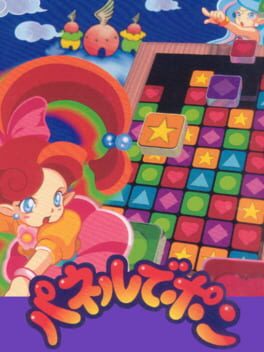Even if games like these exist thanks to Tetris, the difference between it and the rest is that Tetris can survive by itself being purely monochromatic (when it is). Panel de Pon or Puyo Puyo, just to name a few, need to be coloured action-puzzle games, and just that implies that they do not have that kind of coldness, but an approach to learning and the existence of rules to follow. At least more than the two inmediate verbs that are part of Tetris's core: amount and align.
The best aspect of PdP originates when it becomes more than it appears to be and the "action" part shines, specially when you are against the foes in VS mode. It's like a boss rush, but with the difference that every boss fights you the same way (and you too). Even so, you have to learn new tactics in this only combat if you pretend to improve and reach Cordelia, one of the best final challenges I've seen in any videogame to test your skills. Only available at the end of the Hard mode.
The adrenaline transforms this game. During the heat of a fight it no longer is a puzzle game, and becomes a tactical one with management, due to the different portions of the space you have where you're being attacked. Is it better to retire blocks (units) from above to make some space due to the panels (monsters) that were sent to you by the other foe? Or you should block-pierce those panels from below? It's up to you.
The interesting part about this last tactic is that this is the only moment where it kinda reminds me of Tetris, because when the monster panel reveals all of the blocks of which it is composed, they're all gonna fall. And the more you prepare the place they'll fall, the more succesfully will all fall: it's the hardcore part of alignment in this game, and it rocks.
In a sense, I feel like the block nature of this game is like Tetris but in a molecular level. Tetris is about the shapes of the tetraminos. Panel de Pon is about the blocks of those figures.
The best aspect of PdP originates when it becomes more than it appears to be and the "action" part shines, specially when you are against the foes in VS mode. It's like a boss rush, but with the difference that every boss fights you the same way (and you too). Even so, you have to learn new tactics in this only combat if you pretend to improve and reach Cordelia, one of the best final challenges I've seen in any videogame to test your skills. Only available at the end of the Hard mode.
The adrenaline transforms this game. During the heat of a fight it no longer is a puzzle game, and becomes a tactical one with management, due to the different portions of the space you have where you're being attacked. Is it better to retire blocks (units) from above to make some space due to the panels (monsters) that were sent to you by the other foe? Or you should block-pierce those panels from below? It's up to you.
The interesting part about this last tactic is that this is the only moment where it kinda reminds me of Tetris, because when the monster panel reveals all of the blocks of which it is composed, they're all gonna fall. And the more you prepare the place they'll fall, the more succesfully will all fall: it's the hardcore part of alignment in this game, and it rocks.
In a sense, I feel like the block nature of this game is like Tetris but in a molecular level. Tetris is about the shapes of the tetraminos. Panel de Pon is about the blocks of those figures.
